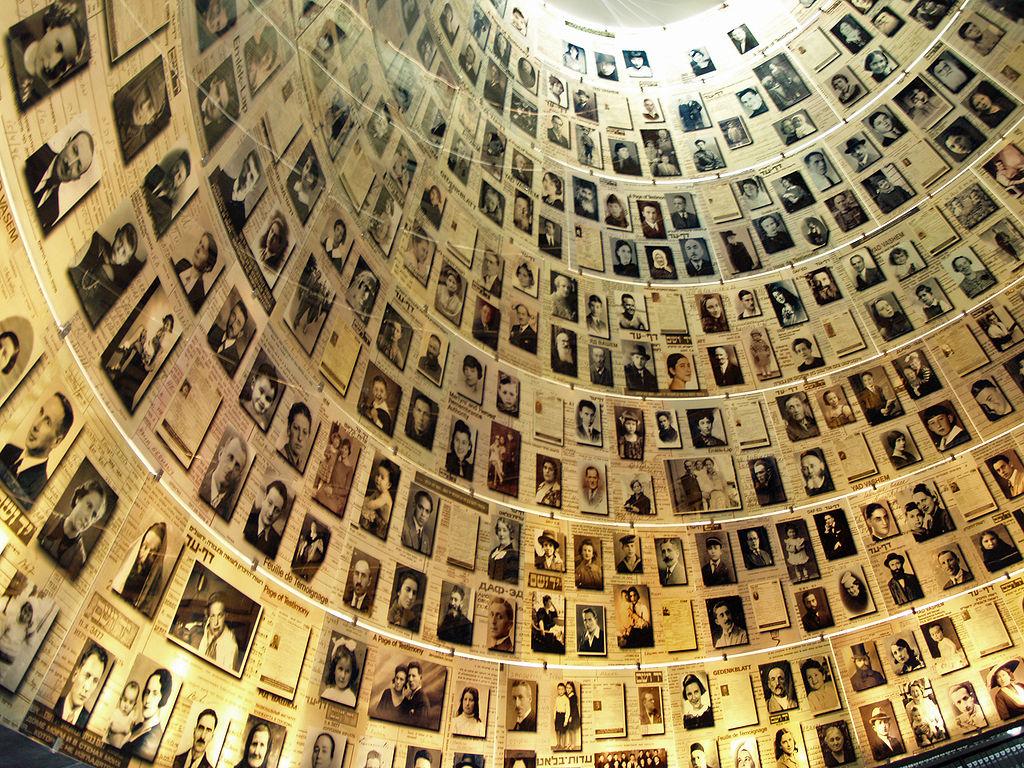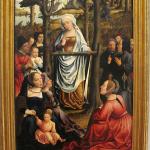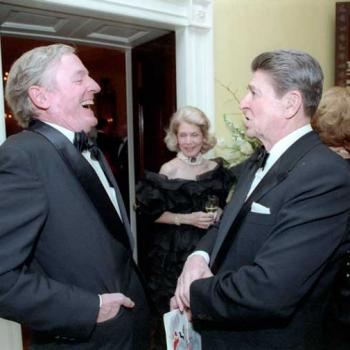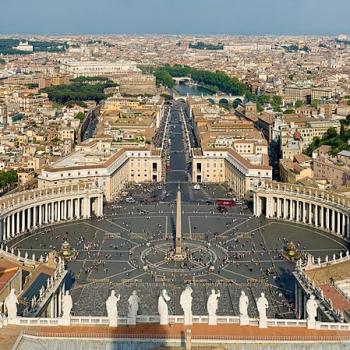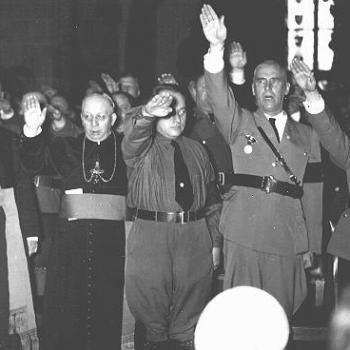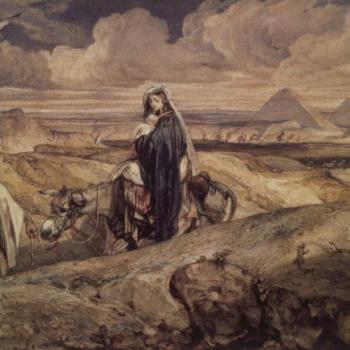By guest writer William M. Shea
In 2006 I was in Jerusalem for a three week seminar for educators at Yad Vashem (which means a name/memorial) on the murder of Jews between 1935 and 1945. Yad Vashem is an international memorial to the victims of the Shoah containing a museum, a library, an education center, two art galleries, an administration building, a publishing house, a striking tree-lined avenue dedicated to the righteous gentiles who saved Jews during the Shoah, and a research center, all on a hill (a crag in fact!) which overlooks the city of Jerusalem. Popes John Paul and Benedict made it part of their pilgrimages to the Christian holy sites in Israel.
Yad Vashem is a haunting place as no other site in Israel is. Its competition in my mind is the Wall of Herod’s Temple, a place where this world meets another and you stand in both at the same time. I visited the Wall in the Old City three times to pray for the people of Israel and the land, and to pray for my family. Why was I there? I could not afford to go as a tourist or a pilgrim, so I was there as a seventy year old student on a grant. I wanted to learn more about the Shoah, its causes and its effects, an event and experience that has haunted me since I was a ten year old in 1945.
Why the Jews? That’s what I thought about as a ten year old watching the films of the camps and the Nuremberg trials in a theatre on Westchester Square in the Bronx. Every time over seventy years, when I have met a Jew that question hit me. That is the question that I carried for decades and which brought me, finally, to Yad Vashem and its seminar room.
Why the Jews?
What did the Yad Vashem scholars have to say?
Was there anti-Judaism in the Roman empire? Yes – a hundred years before the birth of Christianity and two hundred years before that in Egypt. The Romans’ attitude toward Jews was markedly ambiguous. On one side there was fascination and admiration. For many Roman “seekers” Judaism’s monotheism represented a particularly attractive religious and ethical practice. Judaism was a commanding witness to the One who demands justice for all. But at the same time in the popular mind Jews were thought to be arrogant, greedy, treacherous, exclusive and misanthropic, aliens in every town and in the empire itself, whose loyalty was always suspect. Above all they would only worship “the Holy One.”
Christians added to the stock xenophobia a religious hatred perhaps born in the moment of Christian origin: Jews killed the Messiah. Medieval Catholicism‘s rejection of Jews on religious grounds carried with it legal measures meant to fix Jews in the status of a social underclass, to determine where and how they could live, to restrict the sorts of jobs they could do, to mark them as now marginal to the history of salvation, to leave them at the mercy of the mob. The massacres of first Crusade (1097-98 CE) left no doubt as to the helplessness of Jews and the murderous intent of a Christian army.
Modern European anti-Judaism was continuous with the ancient Christian hatred but took a radical turn in the 19th century with the “scientific” invention of a theory of racialism. There was no racism in the old Christian anti-Judaism. In what must strike us as an irony, the 18th century Enlightenment gave Jews the rights of citizenship while Nationalism in the 19th questioned Jewish loyalty. The nations of the West had their question: Are you one of us? Are you from our stock – or are you a lesser sort of human being? You can be one of us but at a price: cultural assimilation. And so there arose the threat of elimination of Judaism at the moment of the Jew’s liberation. In the United States assimilationist pressures were reduced by the establishment of several new Judaisms which allowed Jews to belong to a Jewish community and yet be integrated into the new American land of promise. Like Catholics, Jews in America found ways of having their cake and eating it too.
Many Jews were moved by the egalitarianism and universalism of the Enlightenment ideals, and so headed in the direction of socialism and Marxism – both of which transcended nationalism and demanded egalitarian community, at least in theory. Both Catholics and Jews had trouble with the Enlightenment and modernity. Catholics struggled with the ideology of modernity and its threat to hierarchy and traditionalism, the result being the Fortress Church of Pius IX and Pius X while Jews fought among themselves, trying to defend their families and synagogues against assimilationist and nationalist pressures. In fact, looking back now, it seems that Fortress Catholicism and Jewish Orthodoxy had more in common than they knew, especially in their responses to modernity.
What does it mean to be a Jew?
Modernity hit the Jewish communities with basic questions: what is Judaism, who is a Jew? What is essential to the community’s life? Is Judaism a dispersed nation – a nation spread out among the nations? Is it a faith? Does Judaism demand certain religious beliefs? Is it mainly a religion – or a social practice and a particular form of memory ? Or, is it that mysterious thing, a race? In Christendom there was only one human race, descended from Adam and Eve, but in the dark side of modernity “race” was a matter of blood, and there was no human race embracing all.
In the nineteenth century biblical monogenesis was a taken to be superstition. No one who knew anything believed that the Genesis account of human origins in an original couple is true! And so there were human races: Caucasian, Aryan, Negroid, Asian, and Semitic. Were the Jews a race, and if so, just how human were they? Hitler was quite sure that they were in fact a race and one so inferior to the Aryan race that they were to be denied humanity altogether. Jews were untermenschen. They could have NO national identity and, since they were not Aryans, they could not belong to the German nation. They were to be extruded. They were “cosmopolitan” and so posed a threat to nations which demanded loyalty based on blood. By their mongrel racial status and sexual rapacity they threatened the purity of the higher races.
Hitler added an element from his reading in the arcane and esoteric literature of anti-Judaism, including the infamous Russian forgery, The Protocols of the Elders of Zion.[1] To complete his myth of struggle between the highest and the lowest in the list of races he added the belief that Jews made two great historical incursions into Western culture in order to destroy it. The Jews are always at work to sabotage superior races – they are a parasite race in his conviction. Once in the advent of Christianity in the Roman Empire and once again in the form of Soviet Bolshevism, Jews assaulted western culture under a guise. Christianity, the Catholic Church especially, is a gentile form of Judaism and the Russian revolution was fomented and led by Jews. These must be destroyed if Aryans are to achieve their proper racial dominance.
Hitler thought himself thoroughly modern and practical. Richard Wagner, one of his heroes whose essay on “The Jewish Problem” Hitler admired, thought and worried about the Jews while Hitler himself acted. He killed well over 6 million Jews, plus male homosexuals, gypsies and several million Soviet captives and a million or so Polish Catholics, eleven million altogether, and this figure does not include the 20,000,000 Soviet citizens he killed in Operation Barbarossa, and the millions more untermenschen he killed in central and western Europe. He didn’t kill all the Poles. He ignored some homosexuals and gypsies, but he wanted to kill every Jew alive. So deep was his hatred that his last words before killing himself pleaded with the leaders of the West to finish the destruction of Jews.
Hitler answered the question, Why the Jews?, by identifying Jews as a racial virus. They must be exterminated if the human races are to survive and prosper. Thus, for him the “real” (Nazi) history is the story of the struggle of the highest of humanity (Aryans) against the lowest (Jews). Recall now the chant at Charlottesville in 2018: “The Jews will not replace us!” The myth lives.
So we are faced with two quite distinct answers to the question, Why the Jews? The historian’s answer is that anti-Judaism in the West combines classical xenophobia with the Christian charge of deicide. Hitler’s answer is expressed in an elaborate theory of race with a veneer of Manichaean apocalyticism. As I stood at the Wall and felt the Presence of the Holy One, so I stood in the Museum at Yad Vashem and felt the absence of life and being, the black hole at the heart of humanity pulling life and being into nothing. What is there to be understood about that? It is absurd, a brute fact and nothing more.[2] I should have asked “Why the Nazis?”
[1] Anon., The Protocols of the Elders of Zion. C.1905. I found a copy in a used bookstore in the Bronx when I was about fifteen years old.
image credit: https://commons.wikimedia.org/wiki/File:Yad_Vashem_Hall_of_Names_by_David_Shankbone.jpg#/media/File:Yad_Vashem_Hall_of_Names_by_David_Shankbone.jpg

